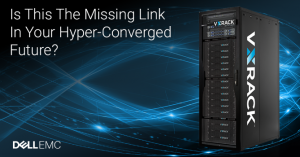By Rhiannon Markham, Architect Lead, Hyper-Converged Solutions, Dell EMC
There are certain words that are currently unavoidable in IT. You can barely pause to take a sip of your morning coffee these days without someone lobbing words like “agile” and “scalable” at you.
Agility is an expectation that only grows as people throughout your business get used to this new cloud-dominated, as-a-service, software-defined world. They now expect a cloud-like experience out of the cloud, meaning the time to deliver value on any project is shrinking by the minute.
Living The Dream?
Hyper-converged infrastructure is often touted as an answer to this problem. By combining network, compute and storage functions in a single software-defined unit, virtual resources can quickly be deployed and redeployed as needed. Whenever you need more, you can simply add more appliances that match demand.
At least that’s the theory. The reality is a little different. Across the industry, hyper-converged appliances are only as robust as the third-party networks they’re connected to. This means they’re scalable but only up to a point.
There are other roadblocks, too. Hyper-converged infrastructure gives you the freedom to quickly, or even automatically, move resources where they’re needed but it’s not always easy to get up and running. Some CIOs have been left tearing their hair out trying to get systems working. It can also be expensive with valuable time and resources wasted on ordering parts, configuration and lifecycle maintenance.
This is far from ideal when sales, marketing and other lines of business are already itching to cut IT out of the loop at the first opportunity. When it takes too long to support their requirements, they’re quick to start exploring workarounds. Just look at the enthusiasm for unauthorised cloud services, which your department only learns about when asked to provide ongoing support.
Back In The Loop
VxRack technology is how you feed the appetite for convenience. Hyper-converged nodes are specifically engineered to provide de-segregated Rack Scale architecture. By integrating networking and management of the entire lifecycle into the technology, customers can quickly adopt it and deploy workloads.
With spine and leaf network topography built into the system, you are no longer beholden to the limitations of existing network capability. The technology is also infinitely scalable, allowing you to add nodes as business need increases, without overloading your existing network architecture, therefore future-proofing your investment. With the ability to run multiple, mission-critical workloads on VxRack, you’ll create your own IT-as-a-service environment, where you incrementally pay for capacity as you grow.
And it can be added fast. As a turnkey solution, it’s physically and logically configured to your needs and ready to take a workload immediately on delivery. This means you’re able to stand up infrastructure much more quickly than if you built it yourself.
This creates a harmonised solution stack incorporating hardware, software and support, rather than with a DIY piecemeal approach. The software-defined nature of VxRack hyper-converged infrastructure also makes it possible to use standardised, general purpose technology across your entire business.
It frees you from the day-to-day concerns of infrastructure management and lets you focus on projects that drive real business development. Now that you’re able to support your business with agile and scalable architecture, you’ll be part of broader, strategic conversations.

